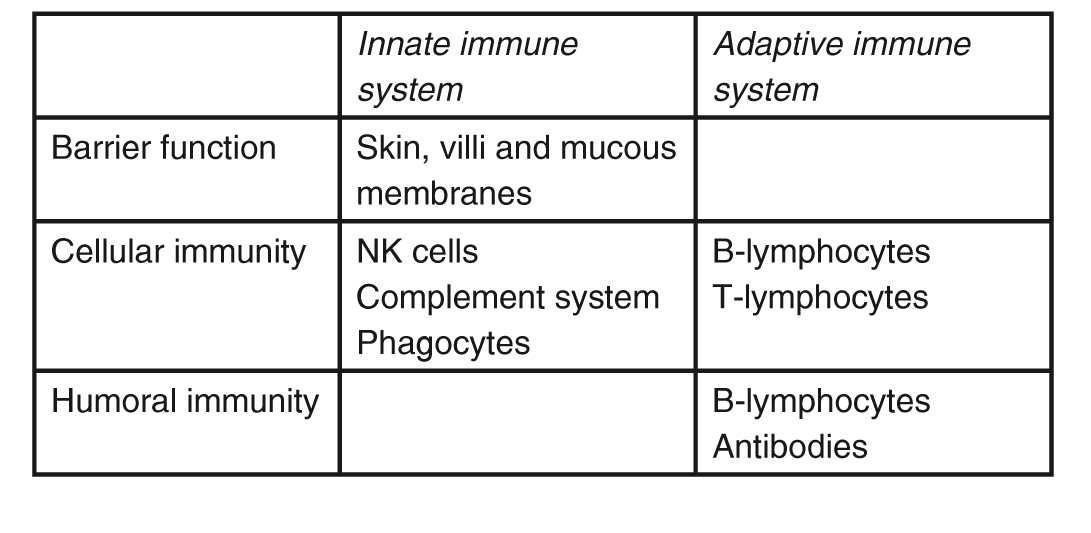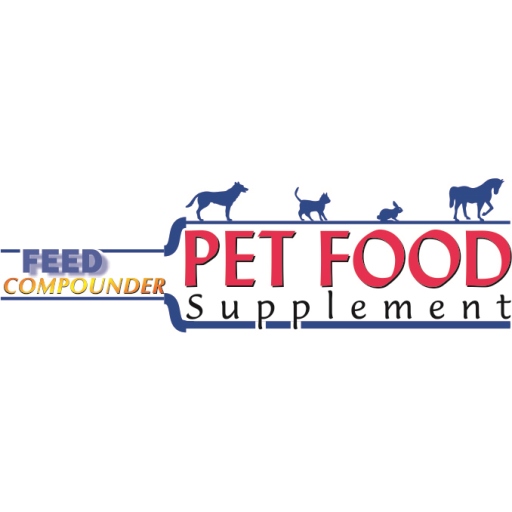The role of vitamins
in the immune system of cats and dogs
By Marijke van de Beek-Weij, MSc and Kevin Truyts, MSc, DSM Nutritional Products
Making the most of a healthy and enjoyable life is only possible when our body is defended by an immune system that is nutritionally supported to work at its best. For us and for our pets, the immune system fights harmful bacteria and keeps other toxins that have invaded the body from making us ill. It is a complex and adaptive system that consists of many general functions, with complementary action to support optimum health. Through this adaptive functionality and support, it can develop a memory against infections, infectious agents and foreign substances.
Young animals like puppies and kittens are most susceptible to infections as their immune system is not fully developed yet, because they have had little exposure to external threats like bacteria, viruses and foreign substances. A newborn’s immune defences are supported by the mother’s antibodies which are transmitted during gestation. This maternal protection becomes inadequate about 4 to 8 weeks after birth as the provided antibodies decrease below a protection threshold, resulting in an immunity gap. Provided the right nutrients via proper nutrition, young animals develop their own immune system over time.

During adulthood the dog’s or cat’s immune system remains fully functional provided their daily diet delivers an adequate amount of key nutrients. With older age their immune function begins to decline, resulting in poorer antibody response at senior age (1, 2, 3).
Therefore, throughout all life stages, an optimal supply of key nutritional ingredients in a pet’s diet is the best solution to ensure a high performing immune defence. Providing the proper nutrients has a significant influence on the ability of the immune system to manage disease challenges. Some examples of how different nutrients can help support the immune system to the benefit of the dog or cat are:
- β-carotene and vitamin A stimulate cellular and humoral immune responses.
- Various B vitamins are associated with improved immunity.
- A high concentration of vitamin C stimulates the effectiveness of white blood cells to destroy foreign bacteria.
- Vitamin D controls the activity of T- and B-lymphocytes, which are important in the adaptive immune system.
Functioning of the immune system
(See Figure 1) The body’s natural barriers, such as skin, villi and mucous membranes, play an initial role in the first line of defence against disease challenges. They are part of the so called innate (non-specific) immune system. If however, any undesirable substance or pathogen does manage to invade the animal then the body responds by activating the next steps of the innate (non-specific immune) immune system as well as the adaptive (specific immune) defence mechanism.
Figure 1: A schematic overview of the functioning of the immune system:
1. Microbes invade the body via a wound. 2. Mastocytes release substances that induce inflammation. This causes other immune cells to go to the infected area. 3. Macrophages remove these microbes. 4. Macrophages bind with B- and T-lymphocytes in the lymph nodes. The B-lymphocytes produce antibodies. 5. Antibodies activate other immune cells, such as macrophages and T-killer cells, to attack the invader. 6. T-helper cells lead antibodies and T-killer cells to the infected area. 7. The immune system is fully active.

White blood cells (phagocytes) recognize and destroy pathogens. Specialized phagocytes – macrophages – remove microbes. Natural Killer (NK) cells are large lymphocytes that play a role destroying cells, for example, tumour cells and virus-infected cells. NK cells also secrete cytokines to defend against pathogens. All these activities are part of the innate, immune system.
The specific, adaptive immune system allows the body to respond more efficiently to a repeated attack by similar pathogens. It stores up information, so it can recognize the pathogens should they invade again. The main players in this system are the B- and T-lymphocytes. B-lymphocytes produce antibodies that react with the pathogen. T-lymphocytes activate macrophages when they recognize a threat, which also destroy pathogens.
Table 1: The types of defence mechanism in the immune system

Vitamin A and β carotene
Vitamin A is crucial for both the innate and the adaptive immune system and is of particular importance for its proper development. Phagocytes and T- and B-lymphocytes cannot function properly without vitamin A. Deficiencies are linked to a weakened and delayed immune functioning, such as reduced effectiveness of mucous membranes (4). Adding β carotene to the pet’s diet has been shown to stimulate the cellular and humoral immune response and acts as an antioxidant (5, 10). Through its antioxidant function it enhances the defence system and has been proven by several studies in animals and humans (6, 7). Studies have also revealed that puppies and kittens given β carotene show better innate and adaptive immune responses. β carotene supplementation significantly restores immune responses in older dogs when compared to their age-matched controls and younger counterparts (8). Important to mention is that cats can convert β carotene to vitamin A, but not in sufficient quantities to be helpful, so pre formed vitamin A is essential (5, 9).

B-vitamins
A number of B vitamins are linked to the immune system. Inadequacies of vitamin B6 result in fewer lymphocytes being produced, slowing down antibody reaction time.
Niacin (vitamin B3) is important for healthy skin and mucous membranes. It is particularly important to ensure niacin adequacy in cat diets as they are unable to compensate for a shortfall through synthesis from tryptophan.
Vitamins B6, folic acid and B12 are important in protein formation and various aspects of the immune system, including reduced activity of NK cells and lower production of cells (including basophils and mastocytes) which carry messages in the immune system via the signalling pathways of histamine (11, 12).
Vitamin B1 is involved in the production of cholesterol and fatty acids that support the membrane function, the initial barrier against pathogens (12).
Vitamin C
Dogs and cats can synthesize vitamin C. However, many consider this vitamin as conditionally essential given its function in the immune system and powerful antioxidant support, helping to recycle vitamin E. Vitamin C reduces the tocopheroxyl radical that is formed when vitamin E gets into an oxidized state and therefor is capable of restoring the radical scavenging activity of vitamin E (13). When pets are experiencing periods of high stress, additional vitamin C supplementation is required to ensure its protective function. Vitamin C is also indispensable in the production of collagen, which holds cells together for the protective barrier function.

Vitamin E
Vitamin E is the most important fat-soluble vitamin. It acts as the major antioxidant in plasma, red blood cells and tissues. It neutralizes free radicals and prevents oxidative damage to polyunsaturated fatty acids in cell membranes, among others. Responses of free radicals are associated with responses of the innate immune system. Insufficient vitamin E in the diet affects the functioning of the immune system. Although deficiencies are rare, extra vitamin E in addition to the basic needs of the animal can be beneficial, particularly when diets have increased levels of omega 3 fatty acids, important in helping to control inflammatory responses (14). Studies with additional dietary vitamin E have revealed enhanced functioning of the immune system and reduced risk of infection, especially in older animals (15). These effects are explained by the better functioning of T-cells, lymphocyte multiplication, IL-2 production and T-helper cells (16,17). Vitamin E also modulates humoral immunity. Supplementation supports increase of immunoglobulin and plaque-forming cells.
Vitamin D
Various components of the immune system (B and T cells, macrophages and dendritic cells) contain vitamin D receptors (18). Enzymes convert vitamin D3 into the active vitamin D metabolite, which binds to the receptor and can then influence the immune system (19). Vitamin D activates the production of an important bacteria-fighting peptide in macrophages and barrier cells (20). A deficiency is associated with the improper functioning of macrophages, particularly on how they move around and destroy pathogens.
Vitamin D also regulates the adaptive immune response. It fine tunes T- and B-lymphocytes’ activity to avoid an overreaction of the immune response. Humans with low blood levels of vitamin D have an increased risk of immune disorders resulting from an overly reactive immune system.
Vitamin-Vitamin interaction and effect on immunity
Next to the functions of each individual vitamin, it is also worth mentioning that some of them work synergistically together and strengthen the immune function (21,22).

Vitamin A and vitamin E work synergistically in antibody production and phagocytosis. It is important to keep balance as increasing only one can counteract the immune function.
A similar relation exists between vitamin A and vitamin D. When both are added adequately, they increase phagocytic activity and enhance oxidative burst (23).
As described earlier vitamin C works synergistically with vitamin E as it reduces vitamin E when it is in an oxidized state and as such restores its radical scavenging potential. Addition of both vitamin C and E also inhibits the release of arachidonic acid (24) which results in stimulation of immune cell responses and suppression of tumor growth in both animals and humans (25,26).
Summary
Being human we know that it is crucial to keep ourselves healthy by having an immune system that works flawlessly. The same applies to our beloved pets which, through optimal and balanced nutrition, can keep their immune defence in top shape. As a pet food manufacturer a correct fortification of your pet foods with high quality vitamins is therefore an absolute must. To check the right premix composition and adequate nutrient supply for your pet foods, please contact your local DSM representatives to ensure your customers can enjoy all the benefits of an optimal nutrition!
References
- Banks K.L. ‘Changes in the immune response related to age’. Symposium on Internal Medicine and the Geriatric Patient. Veterinary Clinic of North America, Small Animal Practice, 11(4) (1981), 683–68
- Greeley EH, Kealy RD, Ballam JM, Lawler DF and Segre M. ‘The influence of age on the canine immune system’. Veterinary Immunology and Immunopathology, 55 (1996): 1-10
- Hayek MG, Massimo SP, Burr JR and Kearns RJ. ‘Dietary vitamin E improves immune functionin cats. In: DP Carey and GA Reinhart (eds), Recent Advantages in Canine and Feline Nutrition, vol. III. IAMS Nutrition Symposium Proceedings (2000): 555 -563
- Kolb E and Seehawer J. ‘Utilisation, metabolism, significance and use of vitamin A in the dog and cat’. Translation from: Praktischer Tierarzt 82(2) (2001): 98–106
- Chew BP and Park JS. ‘Carotenoid action on the immune response’. J. Nutr. 134 (2004): 257–261
- Toll PW, Jewell DE and Novotny B. ‘Oxidative stress and the antioxidant defense system: An overview for practicing veterinarians’. Information Service Hill’s Pet Nutrition
- Kearns RJ, Loos KM, Chew BP, Massimino S, Burr JR, Hayek M. ‘The effect of age and dietary β-carotene on immunological parameters in the dog’. In: Reinhart GA, Carey DP: Recent Advances in Canine and Feline Nutrition; Iams Symp Proc Vol 3 (2000): 389-401
- Massimino S, Kearns RJ, Loos KM, Park JS, Chew BP, Adams S and Hayek MG. ‘Effects of age and dietary beta-carotene on immunological variables in dogs’. J Vet Intern Med 17(6) (2000): 835-42
- Schweigert F,Raila J, Wichert B and Kienzle E. ‘Cats absorb β-carotene, but it is not converted to vitamin A’. J Nutr 132 (2002): 1610–1612
- Chew BP, Park JS, Wong TS, Kim HW, Weng BC, Byrne KM, Hayek MG and Reinhart GA. ‘Dietary β-carotene stimulates cell-mediated and humoral immune response in dogs’. J Nutr 130 (2000): 1910–1913.
- Fordyce HH, Callan B and Giger U. ‘Persistent cobalamin deficiency causing failure to thrive in a juvenile beagle’. J Small Anim Pract 200041 (2000): 407-410
- Kolb E and Seehawer J. ‘Importance and use of B vitamins in cats and dogs’. Translation from: Tierärztl. Umschau 57 (2002)
- Niki E. ‘Interaction of ascorbate and alpha-tocopherol’. Ann. NY Acad. Sci., 498 (1987): 186-199
- Jialal I, Devarai S, Venugopal SK. ‘Oxidative stress, inflammation and diabetic vasulopathies: the role of alpha tocopherol therapy’. Free Radic. Res. 36 (2002): 1331-1336
- Harper J. ‘Dietary antioxidants in cat and dog nutrition’. WALTHAM FOCUS 9 (2) (1999)
- Rimbach G, Minihane AM, Majewicz J, Fischer A, Pallauf J, Virgil F, Weinberg PD. ‘Regulation of cell signalling by vitamin E’. Nutr. Soc. 61 (2002): 415-425
- O’Brien T, Thomas DG, Morel PCH, Rutherfurd-Markwick KJ. ‘Moderate dietary supplementation with vitamin E enhances lymphocyte functionality in the adult cat’. Research in veterinary science 99 (2015): 63-69
- Veldman CM, Cantorna MT & DeLuca HF. ‘Expression of 1,25-dihydroxyvitamin D3 receptor in the immune system’. Arch. Biochem Biophys 374 (2000): 334-338
- Cantorna MT, Zhu Y, Froicu M & Wittke A. ‘Vitamin D status, 1,25-dihyrdoxy-vitamin D3, and the immune system’. Am. J. Clin. Nutr. 80 (2004): 1717S-1720S
- Kolb E and Seehawer J. ‘Utilisation, metabolism, significance and use of D vitamins in the dog and cat’. Translation from:Praktischer Tierarzt 81(7) (2000): 562–572
- Tengerdy RP, Nockels CF. ‘Vitamin E or vitamin A protects chickens against E. coli infection’. Poultry Science 54 (1975): 1292-1296
- Tengerdy RP, Brown JC. ‘Effect of vitamin E and A on humoral immunity and phagocytosis in E. coli infected chicken’. Poultry Science 56 (1977): 957-963
- Tiami H, Chatau MT, Cabanne S, Marti J. Synergistic effect of retinoic acid and 1,25 dihydroxyvitamin D3 on the differentiation of the human monocytic cell line U937. Leuk. Res. 15 (1991): 1145-1152
- El Attar TMA, Lin HS. Effect of vitamin C and vitamin E on prostaglandin synthesis by fibroblasts and squamous carcinoma cells. Prostaglandins Leukot Med. 47 (1992): 253-257
- Lynch NR, Salmon JC. Tumor growth inhibition and potentiation of immunotherapy by indomethacin. J. Natl. Cancer Inst. 62 (1979): 117-121
- Gelin J, Anderson C, Lundholm K. ‘Effect of indomethacin, cytokines and cyclosporin A on tumor growth and subsequent development of cancer cachexia. Cancer Res. 51 (1991): 660-663
Other Topics
Contact
Phone
01994 240002
Address
Plas y Coed, Velfrey Road, Whitland SA34 0RA

